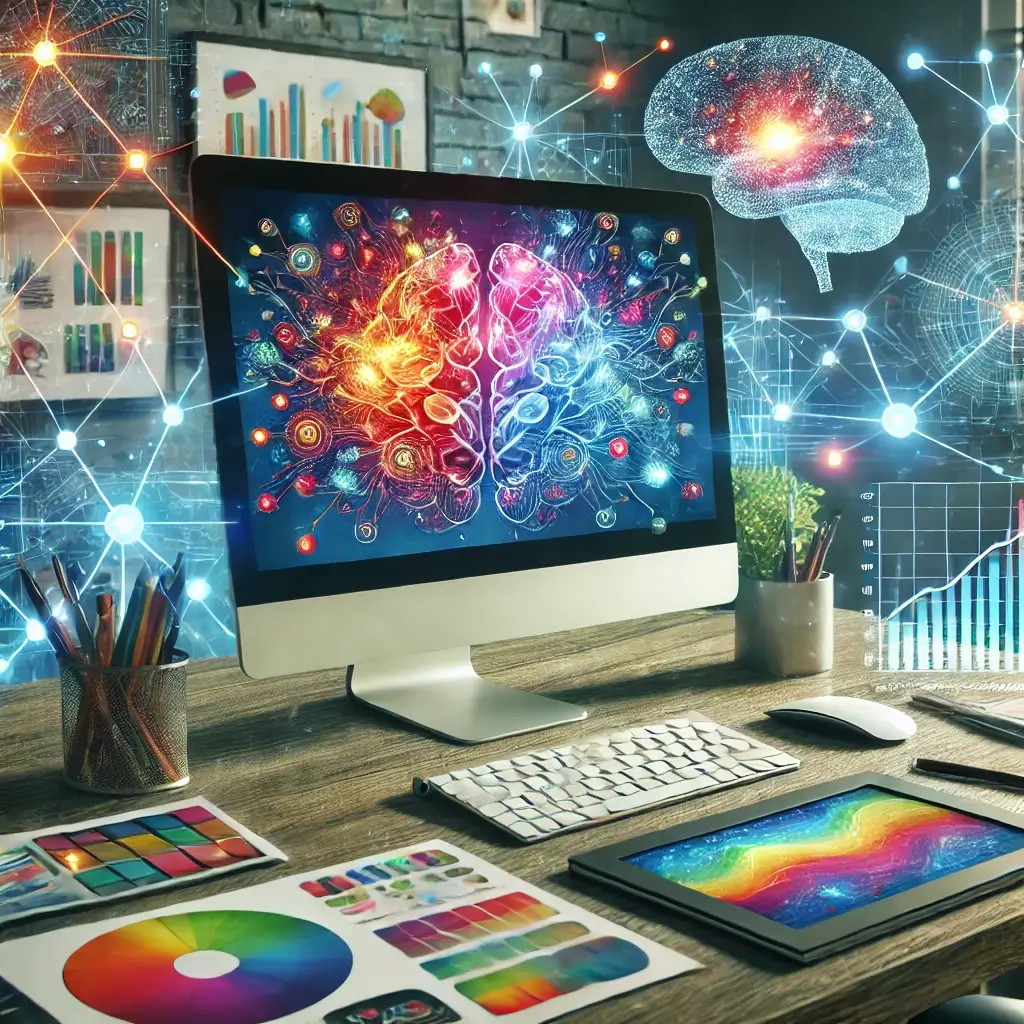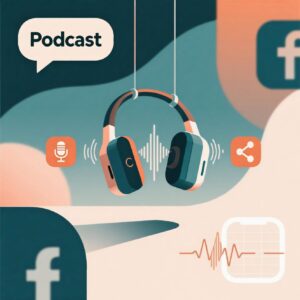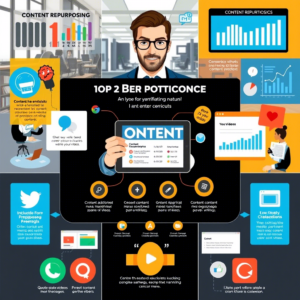Did you know that advances in neuroscience could be the key to creating more effective ads and increasing your conversions? Understanding how the human brain reacts to visual, emotional, and linguistic stimuli is a powerful strategy to stand out in a competitive market. After all, consumer behavior is directly linked to how they process information and make decisions.
In this article, we’ll explore how to use neuroscience to create ads that convert more, offering practical and applicable insights to transform your advertising campaigns. From the impact of colors to the use of emotional triggers, you’ll learn how to grab your audience’s attention and guide them more effectively to the desired action. Keep reading and discover how science can be your ally in achieving better results!
What is Neuroscience in Marketing?
Neuroscience in marketing is the study of how the human brain reacts to different stimuli, such as images, words, sounds, and emotions, applied to advertising strategies. This approach allows us to understand what truly influences consumers’ buying decisions, from choosing a product to interacting with a brand.
At the core of neuroscience is the understanding of how the brain processes information. When an ad is displayed, different areas of the brain are activated, such as the limbic system, which is responsible for emotions, and the prefrontal cortex, which handles rational decisions. This interaction between reason and emotion guides much of consumer choices.
Traditional marketing focuses on direct appeals, like price or functionality, but neuroscience goes beyond that. It focuses on how to create deep emotional connections with the audience, using triggers that spark interest, trust, and desire. When these strategies are correctly applied, they increase the effectiveness of ads, helping brands connect with consumers on a more intimate and instinctual level.
For example, studies show that the human brain is wired to react quickly to visual stimuli. This is why ads with vibrant colors, impactful images, and direct messages are more likely to grab attention. Additionally, using engaging stories and positive emotions can create lasting memories, making your brand more relevant to the consumer.
In summary, neuroscience in marketing is the union of science and creativity, enabling brands to develop smarter, more efficient, and most importantly, human strategies.
How Neuroscience Can Increase Ad Conversions
Neuroscience provides a detailed map of how the human brain works, helping brands create ads that capture attention, generate engagement, and drive conversions. When we understand how people process information and make decisions, it becomes possible to design campaigns that not only attract the eye but also directly influence consumer behavior.
- Attention: The First Step to Conversion
The human brain is constantly filtering information, paying attention only to what seems most relevant. Ads that use striking visual elements, such as contrasting colors, movement, or human faces, tend to capture attention quickly. This is the first step to converting, as without attention, there is no interaction.
- Emotions: The Engine Behind Decisions
The limbic system, responsible for emotions, plays a crucial role in purchase decisions. Ads that evoke positive emotions, such as happiness, trust, or nostalgia, create an immediate connection with the audience. For example, campaigns that tell emotional stories or show moments of achievement and overcoming challenges spark genuine interest.
- Memory: How to Stay in the Consumer’s Mind
Neuroscience shows that ads that provoke a strong emotional reaction are more likely to be remembered. Additionally, subtly and consistently repeating key messages helps to embed the brand in the consumer’s memory, making it easier for them to choose it when it’s time to make a purchase.
- Psychological and Neurological Triggers
There are mental shortcuts that the brain uses to make decisions quickly, known as psychological triggers. Some of them include:
- Scarcity and Urgency: Phrases like “last units” or “limited-time offer” create a sense of urgency that motivates immediate action.
- Social Proof: Showing customer testimonials or sales numbers builds trust and social validation.
- Rewards: Offers that promote a sense of immediate gain, like discounts or freebies, activate the brain’s reward centers, increasing conversion chances.
- Direct Language and Impactful Images
The brain processes simple and direct messages more efficiently. Ads that use short sentences, clear calls to action, and impactful images help the consumer quickly understand the offer and act accordingly.
- Decision-Making: Reason or Emotion?
While people like to think they make decisions rationally, neuroscience reveals that emotions are the primary influencers. However, successful ads balance emotion and reason, highlighting emotional benefits while also presenting logical arguments, such as price and quality.
By applying these neuroscience-based strategies, ads stop being just generic messages and become powerful tools to influence behavior and boost conversions. The secret lies in understanding what truly moves the consumer and using that knowledge creatively and strategically.
Neuroscience-Based Techniques to Create More Converting Ads
Applying neuroscience to marketing is about transforming data about human behavior into practical and effective strategies. Here are some key techniques you can use to create ads that really convert:
- Use Storytelling to Engage the Audience
The human brain is programmed to respond to stories. When an ad tells an engaging narrative, it activates areas of the brain associated with emotions and memory, creating a deeper connection with the consumer. Make sure your story:
-
Is simple and relevant to the audience.
-
Shows challenges and overcoming that consumers can relate to.
-
Includes a hero (who can be the customer or your brand) with a clear solution.
-
Leverage Colors to Stimulate Emotions
Colors have a direct impact on emotions and behavior. For example:
- Red: Creates a sense of urgency and excitement.
- Blue: Conveys trust and calmness.
- Yellow: Evokes happiness and optimism.
Choose the right colors based on your ad’s message and objective.
- Use Scarcity and Urgency Triggers
Neuroscience shows that the fear of missing out (FOMO) is a powerful motivator. Phrases like:
- “Offer valid until today!”
- “Only 5 units left!”
Create an immediate need to act, stimulating decision-making.
- Reward with Small Wins
Activate the brain’s reward centers by offering small incentives, such as:
- Discounts: “Get 20% off your first purchase!”
- Freebies: “Buy now and receive an exclusive gift.”
These rewards release dopamine, creating a sense of pleasure and increasing the chance of conversion.
- Simplify Messages
The brain prefers to process clear and direct information. Complicated or confusing ads are easily ignored. Use:
-
Short and concise sentences.
-
Clear calls to action, such as “Buy Now” or “Learn More.”
-
Avoid jargon or technical language.
-
Include Social Proof
People tend to trust brands that are already approved by others. Include:
-
Real customer testimonials.
-
Impressive numbers, such as “Over 10,000 satisfied customers.”
-
Signs of validation, such as awards or certifications.
-
Use Impactful Images
Neuroscience shows that the brain processes images much faster than text. Use:
-
Photos of human faces, especially expressions that evoke emotion.
-
High-quality images relevant to the product or service.
-
Visual elements that guide the eye to the call to action (CTA).
-
Balance Emotion and Reason
Although emotions drive much of decision-making, logic also plays a role. An effective ad should:
-
Evoke positive emotions, such as joy or empathy.
-
Present rational arguments, such as time savings, money, or tangible benefits.
-
Create Multisensory Experiences
Stimulate consumers’ senses, even in digital ads. Use:
-
Videos with engaging sounds to create an emotional connection.
-
Interactive elements, such as animations or carousels.
-
Test and Analyze Behaviors
Neuroscience teaches that every audience responds differently. Use tools like A/B testing to:
- Experiment with different messages, colors, or layouts.
- Identify what generates more clicks, engagement, and conversions.
- Continuously adjust your strategies based on the results.
By implementing these techniques, you’ll align your ads with the brain’s natural preferences. This approach not only increases conversion chances but also creates a more memorable and impactful experience for the consumer.
Case Studies: Neuroscience Applied to Ads
There’s no better way to understand how neuroscience can transform advertising campaigns and increase conversions than by looking at practical examples. Let’s explore a few real-life cases where brands applied neurological principles to achieve impressive results.
- Coca-Cola: The Power of Emotion and Reward
Coca-Cola is a classic example of how emotions can be used to create lasting connections. In a global campaign, the brand used images of people smiling and sharing happy moments with the slogan “Open Happiness.”
-
Why It Worked?
- Emotional Activation: The campaign triggered the limbic system, associated with feelings of joy and reward.
- Dopamine: The use of happy faces and vibrant colors like red stimulated dopamine release, creating positive associations with the product.
- Emotional Memory: Emotions linked to happiness made the ad unforgettable.
-
Results: The campaign reinforced Coca-Cola’s position as a symbol of happiness, increasing sales and brand identification.
- Amazon: Scarcity and Urgency Triggers
Amazon frequently uses neurological triggers in its marketing strategies. A notable example is Prime Day, where exclusive deals are available for a limited time.
-
Why It Worked?
- Scarcity: Phrases like “limited stock” created a sense of urgency, prompting quick decisions.
- Temporal Urgency: The visible countdown reinforced the need to act immediately.
- Social Proof: Showing the number of people viewing a product at the same time triggered the need to compete for scarce resources.
-
Results: Prime Day became one of Amazon’s highest-volume sales days, with millions of consumers purchasing products they might not have bought without the urgency trigger.
- Apple: Simple Design and Focus on Experience
Apple has always been a reference in applying neuroscience to its ad design. In iPhone campaigns, the brand used minimalist images with a white background and focused on the product, highlighting its features clearly and objectively.
-
Why It Worked?
- Minimalism: The clean design facilitated brain processing, making the message clearer and more attractive.
- Emotional Appeal: Focused on how the iPhone improves the consumer’s life, connecting the product to positive experiences.
- Visual Storytelling: High-quality images sparked desire and created an impactful visual experience.
-
Results: The campaigns reinforced the brand’s premium status, generating lines for product purchases even before release.
- Always: The Impact of Storytelling
The #LikeAGirl campaign from Always used storytelling to challenge stereotypes and connect emotionally with the audience. The main video showed young and adult people reacting to the phrase “like a girl” with an emotional and educational tone.
-
Why It Worked?
- Emotional Identification: The campaign provoked empathy and connection with the message.
- Storytelling: Created a narrative that captured attention and resonated with important social issues.
- Social Proof: Generated discussions and shares, increasing organic reach.
-
Results: The campaign garnered millions of views and boosted the brand’s perception as empathetic and modern.
- McDonald’s: The Role of Reward Sensation
McDonald’s campaigns often use simple visual messages, such as the image of a juicy hamburger with phrases like “You deserve one today.”
-
Why It Worked?
- Dopamine: The visual appeal triggered immediate desire, activating brain areas related to reward.
- Simple Language: Short, direct messages made processing easier and encouraged quick decisions.
- Focus on Pleasure: Associating the product with an emotional reward made the purchase more tempting.
-
Results: The brand maintained its relevance and boosted sales through campaigns that appeal to immediate desire.
Tools and Resources for Applying Neuroscience in Marketing
Neuroscience in marketing goes beyond theories; it becomes even more powerful when integrated with practical tools that help understand and influence consumer behavior. To create more effective ads and increase conversions, here are some tools and resources you can use to apply neuroscience to your strategies.
1. Eye-Tracking Software
These tools analyze where the consumer’s gaze is focused on an ad, helping identify elements that attract the most attention.
How it works: Tracks eye movement and the time spent on different parts of an ad.
Benefit: Allows optimization of ad design by placing key elements, such as calls to action (CTAs), in the most visible areas.
Examples:
- Tobii Pro
- GazePoint
2. Emotion Analysis Tools
These software analyze facial expressions to identify emotions like joy, surprise, or frustration during interactions with ads.
How it works: Uses artificial intelligence to interpret micro-facial expressions while the audience consumes content.
Benefit: Helps create campaigns that emotionally resonate with the audience.
Examples:
- Affectiva
- Realeyes
3. A/B Testing Platforms
Testing different versions of ads is essential to identify which elements best capture attention and generate conversions.
How it works: Shows two or more versions of an ad to different segments of the audience and analyzes the performance of each.
Benefit: Allows quick adjustments based on actual consumer behavior.
Examples:
- Google Optimize
- Optimizely
4. Neuromarketing Tools
Specialized software for mapping neurological reactions to ads, campaigns, or content.
How it works: Combines technologies such as electroencephalography (EEG) and eye tracking to measure consumer engagement.
Benefit: Identifies which visual or auditory elements trigger positive brain responses.
Examples:
- Neurons Inc
- Nielsen Neuro
5. Consumer Behavior Analytics
Behavioral data analytics platforms help identify patterns in user navigation and interaction.
How it works: Tracks clicks, time on page, and interactions with specific elements of a website or ad.
Benefit: Reveals which elements attract more attention and which need adjustments to maintain engagement.
Examples:
- Hotjar
- Crazy Egg
6. Data Visualization Tools
Mapping audience behavior data visually makes it easier to identify insights.
How it works: Converts large volumes of data into charts, heat maps, and visual reports.
Benefit: Makes it easier to understand which factors are impacting the performance of your ads.
Examples:
- Tableau
- Power BI
7. Educational Resources on Neuroscience and Marketing
Investing in knowledge is crucial to applying neurological concepts to ads. Specialized courses and content help deepen your understanding.
Learning platforms:
- Coursera (Courses on Neuromarketing and Consumer Psychology)
- Udemy (Neuroscience-Based Marketing Techniques)
Recommended books:
- Neuromarketing: Exploring the Brain of the Consumer (Leon Zurawicki)
- Thinking, Fast and Slow (Daniel Kahneman)
8. Personalized Marketing Automation
Automating ads based on consumer behavior and preferences enables a more effective and personalized approach.
How it works: Uses artificial intelligence to segment the audience and personalize messages.
Benefit: Aligns the ad message with the emotional and rational triggers of the consumer.
Examples:
- HubSpot
- ActiveCampaign
Conclusion
Neuroscience is a powerful ally in marketing, revealing how the human brain reacts to different stimuli and how these insights can be used to create ads that truly convert. By understanding the mechanisms behind attention, emotion, and memory, you can develop more strategic, creative, and impactful campaigns.
Applying these principles in ad design, word choice, and the creation of visual experiences allows your brand to connect more deeply with the audience. From using engaging storytelling to activating emotional triggers, neuroscience provides practical tools to guide the consumer to action.
Now that you know how to use neuroscience to create ads that convert more, it’s time to put these techniques into practice. Explore the recommended tools, test different approaches, and adjust your campaigns based on real data and consumer behavior.
Remember: success in marketing lies in understanding what truly moves people. With neuroscience, you have the knowledge to transform your ads and achieve extraordinary results. Start today and see how science can be the key to driving your conversions!
FAQ (Frequently Asked Questions)
- What is neuroscience in marketing?
Neuroscience in marketing is the application of studies on the brain and human behavior to understand how people react to visual, emotional, and linguistic stimuli in advertising campaigns. This helps create more effective ads based on how the brain processes information and makes decisions.
- How can neuroscience increase ad conversions?
Neuroscience identifies emotional and cognitive triggers that influence purchase decisions. By applying techniques like storytelling, the use of colors, scarcity, and urgency triggers, you create more attractive and persuasive ads, increasing the likelihood of conversion.
- What are the main neurological triggers used in ads?
Some of the main triggers include:
- Scarcity: Creating a sense of urgency.
- Social proof: Showing reviews or the number of satisfied users.
- Reward: Offering immediate benefits, such as discounts or freebies.
- Are tools like eye-tracking really effective?
Yes, eye-tracking tools help identify which visual elements of an ad capture the most attention. This allows for ad design optimization by highlighting important areas, such as calls to action (CTAs) or products.
- Is neuroscience useful only for large companies?
No! Any business, regardless of size, can apply the principles of neuroscience. Strategies like using colors, clear messaging, and emotional triggers are accessible and effective for small businesses as well.
- How can I measure the impact of neuroscience on my ads?
You can use behavior analytics tools, such as A/B testing, to measure metrics like click-through rates (CTR), conversions, and engagement time. Additionally, platforms like Hotjar and Google Analytics help understand how consumers interact with your ads.
- What resources can I use to learn more about neuroscience in marketing?
There are several options, such as:
- Online courses: Coursera, Udemy, and others offer neuromarketing courses.
- Books: Neuromarketing: Exploring the Brain of the Consumer and Thinking, Fast and Slow are excellent reads.
- Practical tools: Platforms like Tobii Pro and Affectiva allow you to apply neuroscience concepts to your campaigns.




